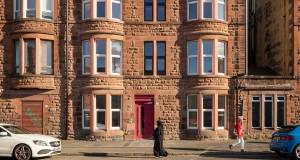
- Government
- Posted
Government announces €1.5bn investment in social housing
The government has announced that it plans to invest over €1.5 billion in local authority housing up until the end of 2017.
The Department of Environment says it is aiming to reduce waiting lists by 25% during this period, and the money will be spent on a combination of construction, purchasing and leasing programmes. A statement read:
The move comes as part of the Government’s €3.8 billion social housing strategy announced last November out to 2020. Each local authority was asked to bring forward housing unit targets and specific building projects out to 2017. As part of the strategy, targets had to be agreed with each local authority in 2015.
In the case of the Dublin local authorities, these will be given housing targets over and above what they proposed to the Department of Environment to ensure strong delivery where the need is greatest. The combined funding total for the Dublin local authorities comes to over €500 million to 2017.
Approximately 300 separate building proposals by local authorities are currently being assessed by the Department and will be announced in a number of phases starting in Mid-April. Construction is already underway for social housing in approximately 33 sites throughout the country.
Minister Kelly said: “Housing is the number one priority for the Government. What we are announcing today is ambitious targets for each local authority right throughout the country for each local authority area. This will have a major impact for those on the housing waiting lists with a national reduction of 25% targeted over the period from these schemes alone. The recovering economy is allowing us to invest in vital public services such as housing and we are doing that,”
Minister Coffey said: “Today’s announcement shows the commitment of this government to tackle the issue of housing lists across the country. The Social Housing Strategy is a key action under the Construction 2020 Strategy and I am pleased to see it being progressed so that priority housing projects can be delivered in the years 2015-2017. €1.5 billion over the next three years is a huge investment in housing; and Minister Kelly and I now expect Local Authorities to deliver on the plans that they have submitted to our Department over the next 3 years.”
The various schemes will target the refurbishment of vacant social housing units and local authorities will have the option of both building and acquiring housing. The average cost of building a social housing unit is €185,000 – meaning in some parts of the country it will remain cheaper and quicker to acquire as opposed to build. Local authorities will have some discretion to adapt to local circumstances, but all will be expected to kick-start a building programme.
However, despite the general improvement in energy efficiency standards for new buildings since the property boom of the mid noughties, there are still serious question marks over the quality of housing likely to be built under new social housing programmes.
The building regulations still allow for methods of insulation that have been linked with issues such as condensation and mould. Equally, the regulations still allow outdated and unproven approaches to ventilation that may not provide proper indoor air quality.
Residents from 20 local authority housing estates in Dublin, Cork and Limerick — some which were built during the boom — have now taken a complaint to the European Committee of Social Rights regarding damp, mild, sewage and inadequate heating.
To date, there has been almost no monitoring of recently-built social housing in Ireland to study energy consumption, indoor air quality or the causes of condensation and mould, in a bid to learn from past mistakes.
There is also little evidence that current building regulations, despite mandating more insulation than in the past, deliver real energy savings because of the phenomenon of ‘comfort taking’, whereby building occupants sometimes use more energy after moderate improvements in energy efficiency, because it becomes possible to afford heating in more rooms.







